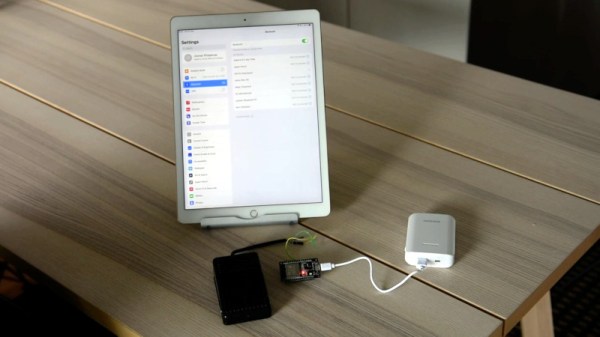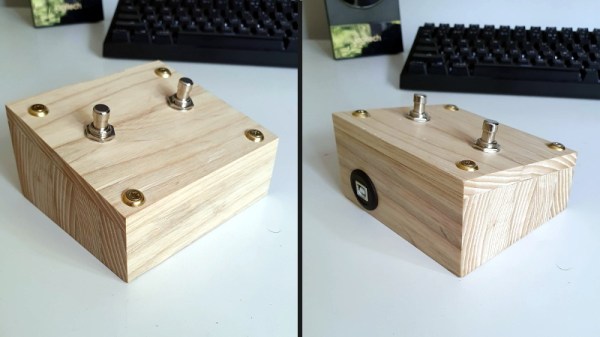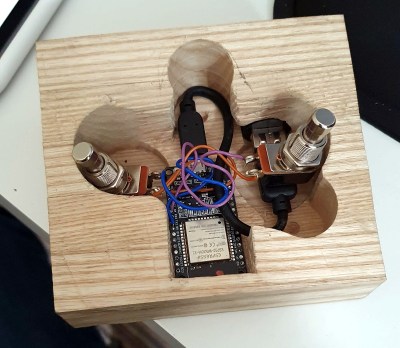Commercial Bluetooth pedals, designed to allow musicians to flip pages of sheet music on a tablet, have the sort of inflated price tag you’d expect for a niche electronic device. Rather than forking as much as $100 USD over for the privilege of hands-free page flipping, [Joonas Pihlajamaa] decided to build his own extremely low cost version using an ESP32 and a cheap foot pedal switch.
In terms of hardware, it does’t get much easier than this. All [Joonas] had to do was hook the pedal up to one of the ESP32’s digital pins, and plug the microcontroller into a USB power bank. From there, it became a software project. With the ESP32-BLE-Keyboard library, it only took a few lines of code to send RIGHT_ARROW or LEFT_ARROW depending on whether the pedal was quickly tapped or held down for a bit; allowing him to navigate back and forth through the pages with just one button.
[Joonas] mentions that the ESP32 development board he’s using is too large to fit inside the pedal itself, though we wonder if the bare module could get slipped in there someplace. Of course you could always build your own pedal with a bit of extra room to fit the electronics, but for less than $2 USD on AliExpress, it’s hard to go wrong with this turn-key unit.
Looking for an alternate approach? We covered a Bluetooth page turner last month that doubled the inputs and packed it all into a handsome wooden enclosure.
Continue reading “This ESP32 Bluetooth Page Turner Can’t Get Any Easier”















